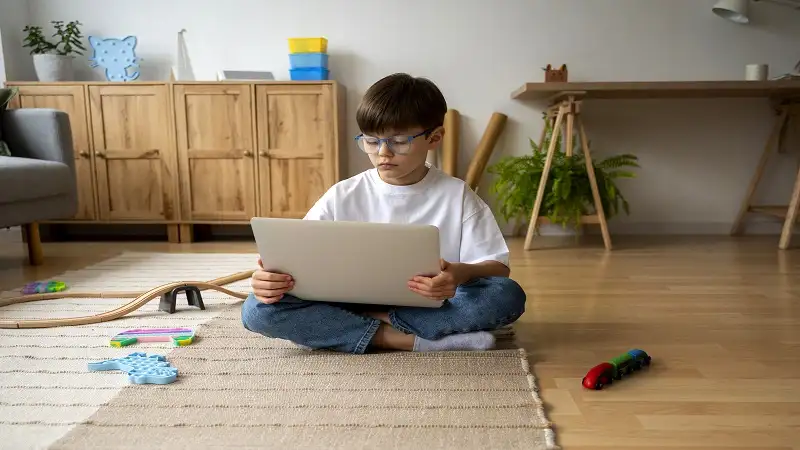In today’s digital world, it’s easy to feel overwhelmed by the many options available when it comes to supporting your child’s education. As a parent, you want to make sure the time your child spends learning online is actually meaningful, not just more screen time. But how do you know which programs truly support growth and curiosity, and which are just digital babysitting?
That’s where thoughtfully designed kids online learning programs come in. The right program will do more than check off academic boxes. It will help your child grow in confidence, independence, and joy for learning—without overwhelming your routine. If you’re exploring trusted options, you might start with flexible online learning classes for kids that combine structure, creativity, and personal connection.
This guide will walk you through how to choose the right program, what to look for, and how to make sure it fits your child’s unique learning style. Let’s get started.
What Makes an Online Program Truly Beneficial for Kids
Before you dive into comparisons, it helps to know what really sets strong kids online learning programs apart from the rest. Many promise academic success, but few deliver on engagement, development, and long-term motivation.
A quality program focuses on more than just facts and figures. It supports the way children think, interact, and explore. Programs should offer a balance of academic structure and creative expression all while keeping your child curious and motivated.
Designed by Educators, Not Just Developers
Not all online classes are created equal. Programs designed by experienced teachers who understand child development will offer age-appropriate pacing, interactive content, and guidance that feels supportive rather than rushed.
You want a program that feels like a classroom, not a screen. Educator-designed kids online learning programs are typically more grounded in proven teaching practices. These include guided instruction, concept layering, and opportunities for real-time feedback.
Predictable Structure Without Rigidity
After a long day at school or home, kids need learning that feels manageable—not like a second shift. The best programs offer structure that helps children feel safe and focused, while also allowing flexibility to explore and take breaks. Programs that follow a weekly rhythm with clearly defined activities and goals can create consistency without pressure. This balance is what helps children stay on track.
So, how do you match all this with what your child truly needs? Let’s talk about personalization.
Matching Programs to Your Child’s Learning Style
Every child brings something different to the table. Some are visual learners. Others are more hands-on or thrive with group discussions. The best kids online learning programs take these differences into account and offer flexible, adaptable formats.
A strong program will offer a variety of learning formats—interactive videos, live sessions, games, visual prompts, and even printable worksheets. This way, your child can engage in a way that feels natural.
Consider Your Child’s Age and Attention Span
Not all six-year-olds have the same focus, and not all ten-year-olds are ready for the same challenges. Look for programs that clearly explain how their content scales with your child’s age or developmental stage.
Younger children benefit from shorter, story-driven lessons. Older kids need deeper projects that involve planning, collaboration, or creative writing. Age-appropriate material also avoids frustration or boredom.
Realistic Expectations and Gentle Progress
Look for programs that offer flexible paths—for both children who need more support and those ready for a challenge. The best kids online learning programs will make space for students to move at their own pace without comparing themselves to others.
This gentle, progress-focused approach keeps children motivated and allows learning to unfold at a natural rhythm. It also helps families stay calm and connected throughout the journey.
Once you understand your child’s learning needs, the next step is comparing available options.
How to Evaluate and Compare Kids Online Learning Programs
With so many choices, how do you know which ones are actually worth your time and investment? Here are a few helpful steps that can guide you.
Look for Programs with Clear Educational Goals
The strongest programs are upfront about what they teach and how they do it. They’ll show you the skills they focus on (reading, writing, maths, science), how lessons are structured, and what outcomes to expect over time.
Avoid programs that overpromise or feel vague. Transparent kids online learning programs will tell you what your child will learn, how feedback is given, and how success is measured.
Read Parent Reviews and Success Stories
One of the most powerful tools in your decision-making is real-world experience. Seek out parent testimonials, review forums, and educational blogs that offer balanced feedback. Are families seeing progress? Do kids enjoy the classes?
Look for feedback from parents of children the same age as yours. If several parents mention that their child became more confident or looked forward to each session, that’s a great sign.
Use Free Trials or Sample Lessons
Most reputable kids online learning programs offer a trial session or free preview. Use this opportunity to let your child try it out. How do they react? Are they curious, bored, frustrated, excited?
Even one trial session can help you evaluate how the program feels in practice, how instructors communicate, and whether the platform is easy to use.
Now that you know what to look for, let’s answer some common questions that come up for parents at this stage.
Frequently Asked Questions
How much screen time is too much for young learners?
It depends on the type of screen time. Interactive, guided sessions are much more valuable than passive scrolling. Strong kids online learning programs usually run for 30 to 60 minutes, with breaks and off-screen extensions.
Some programs even encourage physical movement, drawing, or hands-on activities that break up the day and reduce fatigue.
Can my child really stay engaged through a screen?
Yes—when the program is designed well. Programs that include real-time feedback, group activities, storytelling, and projects often hold kids’ attention far better than static lessons. Engagement comes from being seen, heard, and involved.
What if my child doesn’t enjoy the first session?
That’s perfectly normal. Online learning is a different experience, and it can take a little time to adjust. Consider trying a different teacher or format. Sometimes, it’s not the subject, but the delivery that matters most.
Conclusion
Choosing the right learning experience for your child is not about picking the flashiest platform or the one with the most features. It’s about finding something that respects your child’s personality, supports their learning goals, and fits your family’s routine.
The best kids online learning programs create a space where children feel encouraged to try, to create, and to grow at their own pace. Whether your child is building early reading skills or exploring more advanced writing and storytelling, the right program will meet them with care and curiosity.
That’s where FunFox gently fits in. With a focus on children aged 3 to 12, FunFox offers thoughtfully structured programs that blend academic skill-building with creativity and real-time connection. Their approach is rooted in understanding how kids learn best through play, conversation, and meaningful feedback without overwhelming them.
As a parent, your role matters most. The small decisions like signing up for one creative class a week or giving your child space to share what they’ve learned—can lead to big, lasting growth. Give your child the gift of strong literacy skills with the FunFox Program making learning interactive, enjoyable, and rewarding. Book a call today to learn more.

